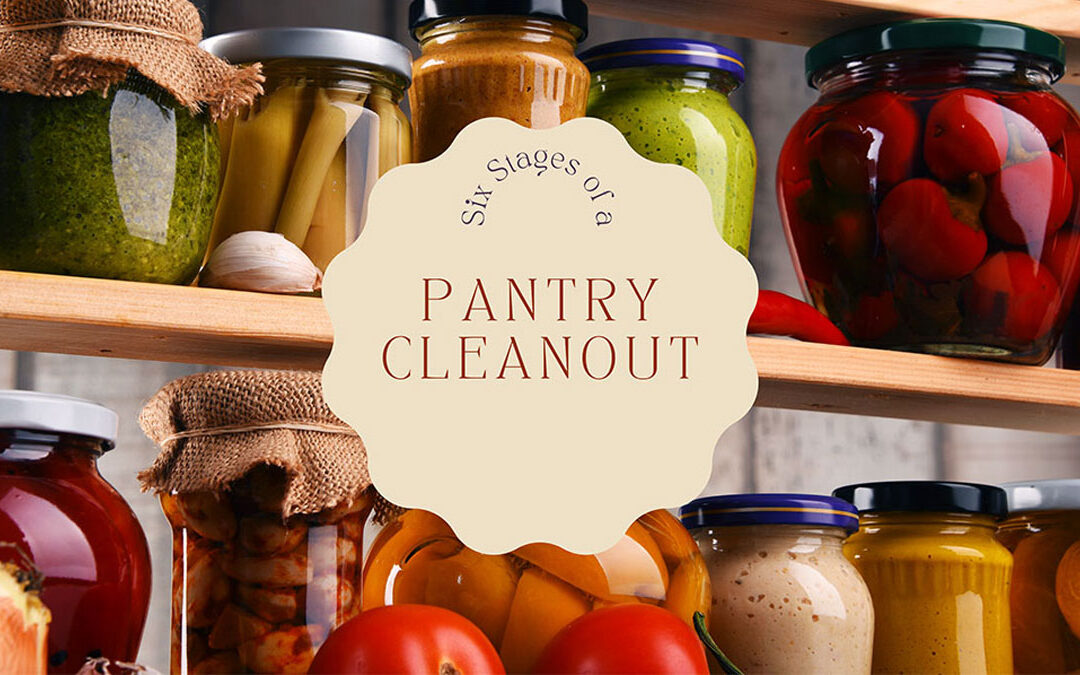When you are starting a healthy lifestyle and don’t know where to begin, start with your pantry! Below are 6 stages of a panty clean out.
Stage 0 Use it or Lose it
If fresh or packaged food has been lingering in your pantry or refrigerator for a while, it is time to use it up or pitch it. Think, is this edible or is it spoiled? If it is still edible, but nearing the end of its time, use it up. If it smells or shows signs of mold, let it go.
Stage 1 Examine Your Fats
Removing refined vegetable oils and replacing them with nourishing real food fats allows our body to digest and use them properly. There are 2 steps in this stage.
Step 1: Clean out vegetable oils from the pantry
This includes: safflower, sunflower, peanut, canola, margarine, vegetable oil, etc.
Replace with ghee, lard, coconut oil, etc., for high heat cooking and olive oil, avocado oil, and butter for finishing or low heat cooking. Not only do these supply our body with healthy fats, like omega 3 and omega 6, but by swapping out the fats, you may see inflammation go down.
Step 2: Check packages
Look for these same inflammatory oils in the ingredient label plus hydrogenated or partially hydrogenated; these are trans fats. Products that have trans fat should be ditched immediately.
*Pro tip- if you find that the majority of your kitchen/pantry contains these ingredients, start with the top 3-5 items you use most often and find an immediate replacement.
Stage 2 Ditch the Chemicals
If an ingredient is not pronounceable/recognizable, uses a number or acronym, or has a process attached to it, our bodies likely don’t know how to use it. This includes food dyes, artificial sweeteners, preservatives, artificial flavorings, and thickening agents. Again, if you find the majority of your kitchen/pantry contains these ingredients, start by removing your top 3-5 that are used the most.
Stage 3 Search out the Sugar
Processed cane sugar does not provide nourishment to our bodies as an everyday food. If it is readily available and feels tempting, addictive or easy to consume mindlessly, it is best to remove most of it from your home. This stage is one of the tougher ones to complete. Often, we have an emotional connection to sweet treats. They remind us of celebrations, feelings of joy or even bring us comfort. It is important to note here the beauty of balance. If we are conscious of items we use that carry hidden added sugars, we can consciously choose the moments we want to enjoy a treat. There is always a healthier option to consider when it comes to a sweet treat!
Stage 4 Replace Refined Grains
If you tolerate grains, this stage can involve swapping white flour-based products for traditional grains like einkorn, spelt, amaranth, quinoa, buckwheat and more. If you are someone who does not tolerate grains, this stage is an opportunity to find food options that do not use grains at all. Alternate flours include coconut, cassava, arrowroot, tapioca, etc. This stage can also be an exciting way to exchange less nutrient-dense food for more nutrient-rich options. Example: kale chips, sweet potato buns, zucchini noodles. Don’t forget, there is always room for balance.
Stage 5 Get More Active in the Kitchen
This stage is not for everyone. However, for most, being active in the kitchen can feel empowering, fun, and motivating. This will set you up for long-term wellness. Turning raw ingredients into wholesome snacks brings connection and engagement when putting food on the table. Remember, it is not necessary to make everything from scratch; as long as it brings joy and is within your means, eating food that is prepared yourself will always nourish more than grabbing something from the shelf!

